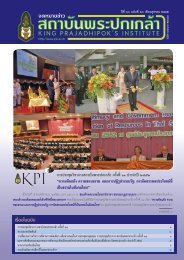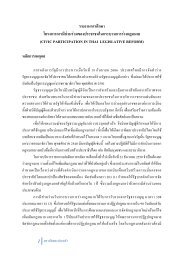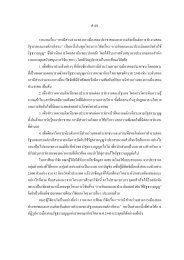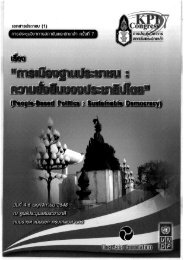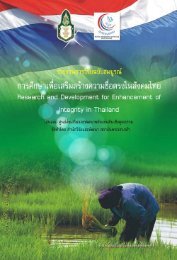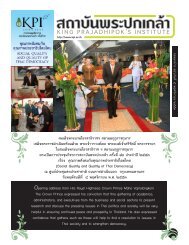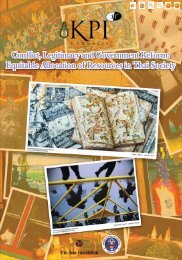SUFFiciENcy EcONOMy ANd GRASSROOtS DEvElOPMENt
SUFFiciENcy EcONOMy ANd GRASSROOtS DEvElOPMENt
SUFFiciENcy EcONOMy ANd GRASSROOtS DEvElOPMENt
You also want an ePaper? Increase the reach of your titles
YUMPU automatically turns print PDFs into web optimized ePapers that Google loves.
208<br />
The Meaning of Sufficiency Economy <br />
International Conference<br />
“…the Inpaeng elderly would like them (the community ecologists) to<br />
understand soil, sky, Mother Nature and seasons. They want their offspring to<br />
realise the power and the value of farmers. Self-reliant farmers are much<br />
better than unskilled labours in big cities.”<br />
Inpaeng’s community ecologists were trained in many courses to develop their<br />
self-reliance competencies such as building the earth house, Phuphan’s biodiversity,<br />
hill tribes’ local wisdom of forest management, Thai traditional medicine, herbal<br />
medicine, organic agriculture, team management, network management or even<br />
website programming.<br />
These training courses were generated or sponsored by Inpaeng administrators<br />
who encouraged the youngster to set their own program of self-reliance agriculture.<br />
The elders expected that those youngsters can skip through the pitfalls of failed<br />
agricultural patterns and learn from the experience of former generations.<br />
The initial outcome of this program is that the community ecologists hold their<br />
own projects that they can make a living of it. Then, the long-term objectives are to<br />
practice the self-reliant agriculture, to keep the Phuphan Mountain range forest from<br />
depletion, and finally to cool down the globe.<br />
Environment seems to be the key outcome of all Inpaeng activities. Inpaeng<br />
people know how to live with the forest. The most challenging mission of the<br />
network is to balance the two extreme attitudes about the forest. First group:<br />
considering the forest as an unlimited resource to exploit without concerning the<br />
effect of depletion. Another group thinks of the forest as strictly untouchable arenas<br />
conserved for the sake of the environment. This study found that Inpaeng concept<br />
did not fit in either two extremes. The issue that concerns the Inpaeng is the<br />
“interaction” between people and the forest. They wanted to use the forest without<br />
depleting it. In Inpaeng perspectives, the forests help people to gain the self-reliance<br />
competency. At the same time, the self-reliance lifestyle directly and indirectly<br />
generates less environment impact compare to the industrialized lifestyle.<br />
In conclusion, this component of the research found that Thai social capital has<br />
three components Survival, Sufficiency, and Sustainability (3Ss). These attributes<br />
were the combination of local wisdom and modern management. Promoting Thai<br />
social capital, or 3Ss, did not mean require that people live in the ancient way of life.<br />
It may seem that the “good old days” in Thai rural area was the ideal community to<br />
live in. However, according to the situations mentioned earlier in this chapter and in<br />
chapter 1, it is impossible to live “back to the past”. Rather, the concept of Thai<br />
social capital encouraged people to live “back to the roots”. To go “back to the<br />
roots”, people needed to analyse their lifestyle, their environment, their networks<br />
and others. In short, people needed to gain a deep understanding on their<br />
culture(Seri Phongpit et al. no publishing year), knowing the strengths, weaknesses,<br />
opportunities and threats and to utilize all forms of capital they had in order to<br />
“stand by their own roots” or to manage their own lifestyles wisely and realistically.



